
Court Street Perspective
This story, first published Dec. 27, 2007, was my final column for The Cincinnati Post, which ceased publication Dec. 31, after 126 years. The year I arrived (1984) was the year The Post moved from the Times-Star building on Broadway to 125 E. Court St., just adjacent to the Hamilton County courthouse (hence the title). M.E.H.
In a way, I guess I’ll always be “the gal at the Post” (a title I heard myself given early in my career at The Cincinnati Post).
Two decades since I shared a desk with Post “Our Town” reporter Mary Linn White (1984), I still feel excited and grateful to be writing about music in such a musically rich community.
It was hard to pare it down, but for the Post’s final Timeout, here’s a look back after 23 years.
[] Who are these so-called critics?
When I first interviewed former CSO music director Michael Gielen (late in1984), he kept me waiting for 30 minutes and told me he hadn’t read my review.
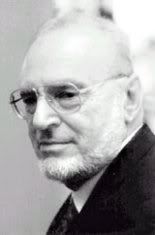
Michael Gielen
You couldn’t blame him, having been excoriated by local musical traditionalists for his prickly, modernist programming.
One of Cincinnati’s own, James Levine, is winning praises now for doing exactly the same thing with the Boston Symphony.
With a touch of irony perhaps, Gielen led Tchaikovsky’s “Pathetique”Symphony for his farewell concert at Riverbend in 1986. There were tears in his eyes as he told me backstage afterwards, “they play so well.”
[] Classy lady. I met Patty Beggs, clipboard in hand, at lunch in Hyde Park in 1984. As marketing director, now CEO, of Cincinnati Opera, she has given the opera an updated image
.
Patrica K. ("Patty") Beggs
without letting her ego get in the way. Her much-emulated promotional campaigns blended business smarts, pizzazz and even courage (Patty got into a bit of trouble in 1988 by linking Rev. Blitch in Carlisle Floyd’s “Susannah” with televangelist Jimmy Swaggart).
[] Opera 1A.
As an instrumentalist, I have fond memories of my opera “tutor,” former Cincinnati Opera head James de Blasis (1973-96), who shared his directorial knowledge and experience with me beginning with the opera’s first (and only) "Eugene Onegin" in November, 1984.

James de Blasis
With Jim’s warmth and insight, it is no accident that his productions remain among the most affecting I have ever seen, including a soaring “Faust” (1985) and a four-hanky Romeo and Juliet” (1989).
[] Now it can be told.
I got Jesus Lopez-Cobos’ telephone number in Spain from a friend in San Antonio, Texas where I had been music critic the year before coming to Cincinnati (he had guest conducted the San Antonio Symphony). With the CSO about to announce Gielen’s successor, I worked through a field of possible candidates, learned from Lopez-Cobos’ management that he was to guest conduct the CSO on a mysteriously open date at Riverbend and called Madrid to confirm.
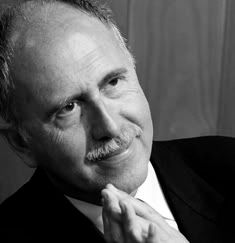
Jesus Lopez-Cobos
The Post’s Wayne Perry rushed over from the copy desk and got the story in the final edition June 20, 1985, the day before the CSO press conference. I was persona non grata at the CSO for quite a while.
[] Brit at CCM.
Opera was ascendant at the University of Cincinnati College-Conservatory of Music during the late 80s and 90s under British director Malcolm Fraser (opera chairman 1986-2002). There was never a sharper wit (Monty Python was an inspiration, he said). His “audition” piece, Prokofiev’s “Love for Three Oranges” in 1986, is legendary. My personal favorite remains his 1997 punk “Julius Caesar in Egypt” (Handel) with Cleo and Julius in black leather and chains.
.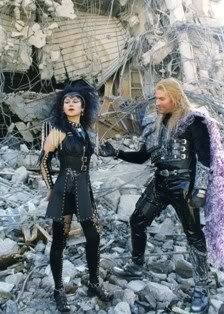
Haewon Moon and Philip Mark Horst in Handel's "Julius Caesar in Egypt" at the
University of Cincinnati College-Conservatory of Music in 1997, directed by Malcolm Fraser
[] Lunch on Liberty St. One of the best lunches I ever had was with CCM conducting head Gerhard Samuel at his home in Over-the-Rhine preceding his retirement in 1997. A refugee from Nazi Germany, Samuel brought international recognition to CCM during his 21-year tenure, leading the world premiere recordings of Charles Ives’ “Universe Symphony” and Hans Rott’s Symphony in E Major with the CCM Philharmonia, taking the orchestra to Europe in 1989 at the invitation of the International Mahler Festival and training a generation of young
conductors.
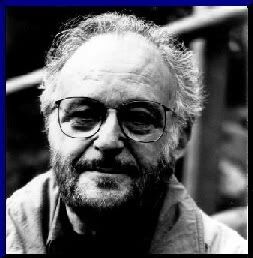
Gerhard Samuel
Samuel also revived the Cincinnati Chamber Orchestra, serving as music director from 1983-92 and setting it up for Keith Lockhart (until 1999) and Mischa Santora (since 2000).
[] Maytime. The May Festival thrived under music director James Conlon (1979 to the present), with terrific concert opera, premieres by Kurt Weill (“Propheten,” 1999) and Liszt (“St. Stanislaus,” 2003) and concerts celebrating brotherhood after the 2001 riots in Over-the-Rhine.
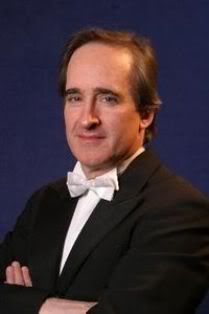
James Conlon
The May Festival Chorus found a ringer in 1989 with director Robert Porco, a “yes, but . . .” leader whose modus operandi is to keep raising the bar. Their War Requiem by Britten with Conlon and the CSO made an indelible impression at Carnegie Hall in October, 2001, the air still acrid from the 9-11 bombings.
.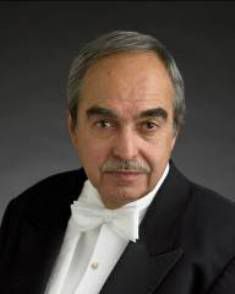
Robert Porco
[] Pops Goes the CSO. “Pops,” means popular and like Arthur Fiedler in Boston, Cincinnati Pops conductor Erich Kunzel filled this bill to the max, making eight TV specials, selling CDs hand over fist and becoming Billboard magazine’s classical crossover artist of the year four years in a row (1988-91).

Erich Kunzel
Lopez-Cobos, music director from 1986-2001, labored selflessly in Kunzel’s shadow, leading the CSO on successful tours, producing 26 fine recordings, founding the CSO Chamber Players and presiding over a starry CSO centennial gala in 1995 with guest artists Itzhak Perlman, Mstislav Rostropovich and
Richard Stoltzman. As attendance began to decline in the 90s an industry-wide phenomenon that just looked worse in over-sized Music Hall Lopez-Cobos took unfair blame.
As if to remind Cincinnati of his legacy, he won the CSO’s first, and so far only, performance-based Grammy nomination in 2001 (best orchestral performance), after he had left the orchestra.
[] Are you the one? Or should we look for another, I thought, as I took my seat at Music Hall on Feb. 19, 1999 for the CSO debut of Estonian conductor Paavo Järvi. The search had begun for Lopez-Cobos’ successor. For me, Sibelius Fifth Symphony has always been a kind of “test” and I had never been moved by it as I
was that night. I went backstage afterwards to congratulate the young Estonian (36), whose serious manner matched that of his conducting.
Järvi’s appointment in 2000 cast a beacon on the CSO’s future. President Steven Monder sneaked him up the back stairs at Music Hall to present him at the press conference in Corbett Tower. His inaugural concert on Sept. 14, 2001 was dimmed by 9-11, but a fuse was lit. Fireworks followed in succeeding years: Sibelius’ “Kullervo” with the Estonian National Male Choir and symphonies by Shostakovich, Prokofiev, Nielsen and Mahler.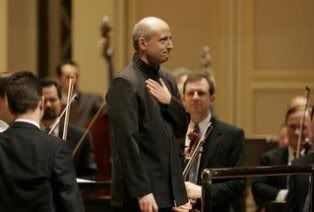
Paavo Järvi acknowledging the applause at a Cincinnati Symphony concert
His first pairings for Telarc, thoughtful ones like Sibelius and Eduard Tubin, have been re-focused on chestnuts by Tchaikovsky and Rachmaninoff. But CSO concerts themselves have taken some intriguing turns with programs like Mahler and Messiaen (contrasting views of death), Shostakovich and Prokofiev (music and politics) and Penderecki (reflections on Pearl Harbor Day).
[] Is this the train to Mito?
Following the CSO on tour was rewarding even before the orchestra changed its rules to allow the media to travel with them. I remember waiting beside railroad tracks in rural Switzerland in the wee hours, witnessing Lopez-Cobos’ welcome in his native Spain, taking the wrong train to Mito (Japan) and reviewing concerts at Kinko’s in New York after midnight and late at night at an internet café in a dubious section of Paris.
[] It’s about programming, stupid, says spunky James R. Cassidy, who has been pulling rabbits out of hats since 1992 as music director of the Kentucky Symphony Orchestra. Cassidy and wife Angela Williamson craft and sell programs of remarkable ingenuity, often showing the other side of the river how it's done.
.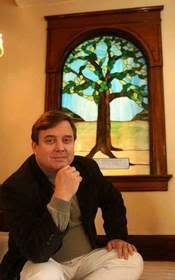
James R. (J.R.) Cassidy
Cassidy led the local premieres of Tan Dun’s “Water Concerto,” Michael Daugherty’s “Dead Elvis” and Henryk Gorecki’s mystical minimalist Symphony No. 3, Bartok’s “Miraculous Mandarin” with live video feed and a horrific, semi-staged “Sweeney Todd.”
[] “Optimizing” Music Hall for opera.
Nicholas Muni, Cincinnati Opera artistic director from 1997-2004, did it ("optimize" was his word) by extending the stage forward, framing the proscenium arch in black
velvet to draw the eye into the stage and installing new lighting.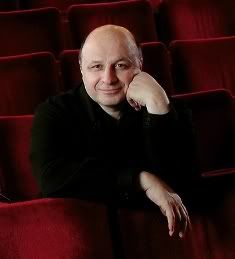
Nicholas Muni
He also staged cutting edge repertoire and challenging productions. Bravo Nic, who brought Schoenberg’s “Erwartung,” Bartok’s “Bluebeard’s Castle” and Richard Strauss’ “Elektra” for the first time to the nation’s second oldest opera company.
[] Enter Evans. Artistic director Evans Mirageas brought leadership par excellence to Cincinnati Opera in 2005, overseeing its move into the newly renovated north wing of Music Hall, advocating opera passionately, onstage and off, and presiding over “Margaret Garner,” the opera’s 2005 co-commission about escaped slave Margaret Garner.
.
Evans Mirageas
[] Optimizing Music Hall for the symphony. Is Music Hall for the CSO or the CSO for Music Hall? Despite its beauty and grandeur, it is wrong-headed to hold the CSO hostage to a building that fulfills its intended purpose only five days a year during the May Festival.
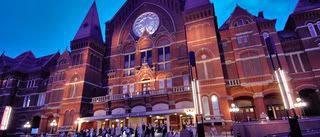
Music Hall in Cincinnati, built in 1877 for the Cincinnati May Festival
Granted, it’s a lovely event. Nostalgic Cincinnatians flounce into Music Hall in 19th century costumes, young girls dance around a maypole and everyone sings the “Hallelujah” Chorus at the final concert, but no orchestra in the world anchors a hall even close to its size (3,516 seats). The concert hall in the new National Center for the Performing Arts in Beijing, China, a metropolis of 19 million, only seats 2,017.
Like the cockroach that ate Cincinnati, Music Hall is consuming the CSO. This crown jewel of the city, which had a tailor-made home from1912-36 in 2,200-seat Emery Theatre (now abandoned), needs re-mounting, if not in a reconfigured Music Hall, then somewhere else.
Such risk-taking – rare in conservative Cincinnati, witness the CSO’s
one-time-only experiments with video screens at Music Hall (1992) and concert opera spread over a weekend, festival-style (“Tristan and Isolde,” 1998) is essential if the CSO is to continue to boast a top position among American orchestras.
[] Other memories:
Lockhart riding an elephant into the Riverbend pavilion during a Pops “Symphantasy” concert Kunzel rising from the pit in horns, cape and tail to lead the Pops’ “Chiller” concert at Music Hall turtleneck-clad Santora conducting and narrating the CCO’s “20th Century Classics” atop a stool in the Aronoff Center’s Fifth-Third Theater and former CSO associate conductor John Morris Russell’s sparkling but sadly discontinued “Home for the Holidays” show at the Taft Theater
(Porkopolis Penguins!).
In a way, I guess I’ll always be “the gal at the Post” (a title I heard myself given early in my career at The Cincinnati Post).
Two decades since I shared a desk with Post “Our Town” reporter Mary Linn White (1984), I still feel excited and grateful to be writing about music in such a musically rich community.
It was hard to pare it down, but for the Post’s final Timeout, here’s a look back after 23 years.
[] Who are these so-called critics?
When I first interviewed former CSO music director Michael Gielen (late in1984), he kept me waiting for 30 minutes and told me he hadn’t read my review.

Michael Gielen
You couldn’t blame him, having been excoriated by local musical traditionalists for his prickly, modernist programming.
One of Cincinnati’s own, James Levine, is winning praises now for doing exactly the same thing with the Boston Symphony.
With a touch of irony perhaps, Gielen led Tchaikovsky’s “Pathetique”Symphony for his farewell concert at Riverbend in 1986. There were tears in his eyes as he told me backstage afterwards, “they play so well.”
[] Classy lady. I met Patty Beggs, clipboard in hand, at lunch in Hyde Park in 1984. As marketing director, now CEO, of Cincinnati Opera, she has given the opera an updated image
.

Patrica K. ("Patty") Beggs
without letting her ego get in the way. Her much-emulated promotional campaigns blended business smarts, pizzazz and even courage (Patty got into a bit of trouble in 1988 by linking Rev. Blitch in Carlisle Floyd’s “Susannah” with televangelist Jimmy Swaggart).
[] Opera 1A.
As an instrumentalist, I have fond memories of my opera “tutor,” former Cincinnati Opera head James de Blasis (1973-96), who shared his directorial knowledge and experience with me beginning with the opera’s first (and only) "Eugene Onegin" in November, 1984.

James de Blasis
With Jim’s warmth and insight, it is no accident that his productions remain among the most affecting I have ever seen, including a soaring “Faust” (1985) and a four-hanky Romeo and Juliet” (1989).
[] Now it can be told.
I got Jesus Lopez-Cobos’ telephone number in Spain from a friend in San Antonio, Texas where I had been music critic the year before coming to Cincinnati (he had guest conducted the San Antonio Symphony). With the CSO about to announce Gielen’s successor, I worked through a field of possible candidates, learned from Lopez-Cobos’ management that he was to guest conduct the CSO on a mysteriously open date at Riverbend and called Madrid to confirm.

Jesus Lopez-Cobos
The Post’s Wayne Perry rushed over from the copy desk and got the story in the final edition June 20, 1985, the day before the CSO press conference. I was persona non grata at the CSO for quite a while.
[] Brit at CCM.
Opera was ascendant at the University of Cincinnati College-Conservatory of Music during the late 80s and 90s under British director Malcolm Fraser (opera chairman 1986-2002). There was never a sharper wit (Monty Python was an inspiration, he said). His “audition” piece, Prokofiev’s “Love for Three Oranges” in 1986, is legendary. My personal favorite remains his 1997 punk “Julius Caesar in Egypt” (Handel) with Cleo and Julius in black leather and chains.
.

Haewon Moon and Philip Mark Horst in Handel's "Julius Caesar in Egypt" at the
University of Cincinnati College-Conservatory of Music in 1997, directed by Malcolm Fraser
[] Lunch on Liberty St. One of the best lunches I ever had was with CCM conducting head Gerhard Samuel at his home in Over-the-Rhine preceding his retirement in 1997. A refugee from Nazi Germany, Samuel brought international recognition to CCM during his 21-year tenure, leading the world premiere recordings of Charles Ives’ “Universe Symphony” and Hans Rott’s Symphony in E Major with the CCM Philharmonia, taking the orchestra to Europe in 1989 at the invitation of the International Mahler Festival and training a generation of young
conductors.

Gerhard Samuel
Samuel also revived the Cincinnati Chamber Orchestra, serving as music director from 1983-92 and setting it up for Keith Lockhart (until 1999) and Mischa Santora (since 2000).
[] Maytime. The May Festival thrived under music director James Conlon (1979 to the present), with terrific concert opera, premieres by Kurt Weill (“Propheten,” 1999) and Liszt (“St. Stanislaus,” 2003) and concerts celebrating brotherhood after the 2001 riots in Over-the-Rhine.

James Conlon
The May Festival Chorus found a ringer in 1989 with director Robert Porco, a “yes, but . . .” leader whose modus operandi is to keep raising the bar. Their War Requiem by Britten with Conlon and the CSO made an indelible impression at Carnegie Hall in October, 2001, the air still acrid from the 9-11 bombings.
.

Robert Porco
[] Pops Goes the CSO. “Pops,” means popular and like Arthur Fiedler in Boston, Cincinnati Pops conductor Erich Kunzel filled this bill to the max, making eight TV specials, selling CDs hand over fist and becoming Billboard magazine’s classical crossover artist of the year four years in a row (1988-91).

Erich Kunzel
Lopez-Cobos, music director from 1986-2001, labored selflessly in Kunzel’s shadow, leading the CSO on successful tours, producing 26 fine recordings, founding the CSO Chamber Players and presiding over a starry CSO centennial gala in 1995 with guest artists Itzhak Perlman, Mstislav Rostropovich and
Richard Stoltzman. As attendance began to decline in the 90s an industry-wide phenomenon that just looked worse in over-sized Music Hall Lopez-Cobos took unfair blame.
As if to remind Cincinnati of his legacy, he won the CSO’s first, and so far only, performance-based Grammy nomination in 2001 (best orchestral performance), after he had left the orchestra.
[] Are you the one? Or should we look for another, I thought, as I took my seat at Music Hall on Feb. 19, 1999 for the CSO debut of Estonian conductor Paavo Järvi. The search had begun for Lopez-Cobos’ successor. For me, Sibelius Fifth Symphony has always been a kind of “test” and I had never been moved by it as I
was that night. I went backstage afterwards to congratulate the young Estonian (36), whose serious manner matched that of his conducting.
Järvi’s appointment in 2000 cast a beacon on the CSO’s future. President Steven Monder sneaked him up the back stairs at Music Hall to present him at the press conference in Corbett Tower. His inaugural concert on Sept. 14, 2001 was dimmed by 9-11, but a fuse was lit. Fireworks followed in succeeding years: Sibelius’ “Kullervo” with the Estonian National Male Choir and symphonies by Shostakovich, Prokofiev, Nielsen and Mahler.

Paavo Järvi acknowledging the applause at a Cincinnati Symphony concert
His first pairings for Telarc, thoughtful ones like Sibelius and Eduard Tubin, have been re-focused on chestnuts by Tchaikovsky and Rachmaninoff. But CSO concerts themselves have taken some intriguing turns with programs like Mahler and Messiaen (contrasting views of death), Shostakovich and Prokofiev (music and politics) and Penderecki (reflections on Pearl Harbor Day).
[] Is this the train to Mito?
Following the CSO on tour was rewarding even before the orchestra changed its rules to allow the media to travel with them. I remember waiting beside railroad tracks in rural Switzerland in the wee hours, witnessing Lopez-Cobos’ welcome in his native Spain, taking the wrong train to Mito (Japan) and reviewing concerts at Kinko’s in New York after midnight and late at night at an internet café in a dubious section of Paris.
[] It’s about programming, stupid, says spunky James R. Cassidy, who has been pulling rabbits out of hats since 1992 as music director of the Kentucky Symphony Orchestra. Cassidy and wife Angela Williamson craft and sell programs of remarkable ingenuity, often showing the other side of the river how it's done.
.

James R. (J.R.) Cassidy
Cassidy led the local premieres of Tan Dun’s “Water Concerto,” Michael Daugherty’s “Dead Elvis” and Henryk Gorecki’s mystical minimalist Symphony No. 3, Bartok’s “Miraculous Mandarin” with live video feed and a horrific, semi-staged “Sweeney Todd.”
[] “Optimizing” Music Hall for opera.
Nicholas Muni, Cincinnati Opera artistic director from 1997-2004, did it ("optimize" was his word) by extending the stage forward, framing the proscenium arch in black
velvet to draw the eye into the stage and installing new lighting.

Nicholas Muni
He also staged cutting edge repertoire and challenging productions. Bravo Nic, who brought Schoenberg’s “Erwartung,” Bartok’s “Bluebeard’s Castle” and Richard Strauss’ “Elektra” for the first time to the nation’s second oldest opera company.
[] Enter Evans. Artistic director Evans Mirageas brought leadership par excellence to Cincinnati Opera in 2005, overseeing its move into the newly renovated north wing of Music Hall, advocating opera passionately, onstage and off, and presiding over “Margaret Garner,” the opera’s 2005 co-commission about escaped slave Margaret Garner.
.

Evans Mirageas
[] Optimizing Music Hall for the symphony. Is Music Hall for the CSO or the CSO for Music Hall? Despite its beauty and grandeur, it is wrong-headed to hold the CSO hostage to a building that fulfills its intended purpose only five days a year during the May Festival.

Music Hall in Cincinnati, built in 1877 for the Cincinnati May Festival
Granted, it’s a lovely event. Nostalgic Cincinnatians flounce into Music Hall in 19th century costumes, young girls dance around a maypole and everyone sings the “Hallelujah” Chorus at the final concert, but no orchestra in the world anchors a hall even close to its size (3,516 seats). The concert hall in the new National Center for the Performing Arts in Beijing, China, a metropolis of 19 million, only seats 2,017.
Like the cockroach that ate Cincinnati, Music Hall is consuming the CSO. This crown jewel of the city, which had a tailor-made home from1912-36 in 2,200-seat Emery Theatre (now abandoned), needs re-mounting, if not in a reconfigured Music Hall, then somewhere else.
Such risk-taking – rare in conservative Cincinnati, witness the CSO’s
one-time-only experiments with video screens at Music Hall (1992) and concert opera spread over a weekend, festival-style (“Tristan and Isolde,” 1998) is essential if the CSO is to continue to boast a top position among American orchestras.
[] Other memories:
Lockhart riding an elephant into the Riverbend pavilion during a Pops “Symphantasy” concert Kunzel rising from the pit in horns, cape and tail to lead the Pops’ “Chiller” concert at Music Hall turtleneck-clad Santora conducting and narrating the CCO’s “20th Century Classics” atop a stool in the Aronoff Center’s Fifth-Third Theater and former CSO associate conductor John Morris Russell’s sparkling but sadly discontinued “Home for the Holidays” show at the Taft Theater
(Porkopolis Penguins!).